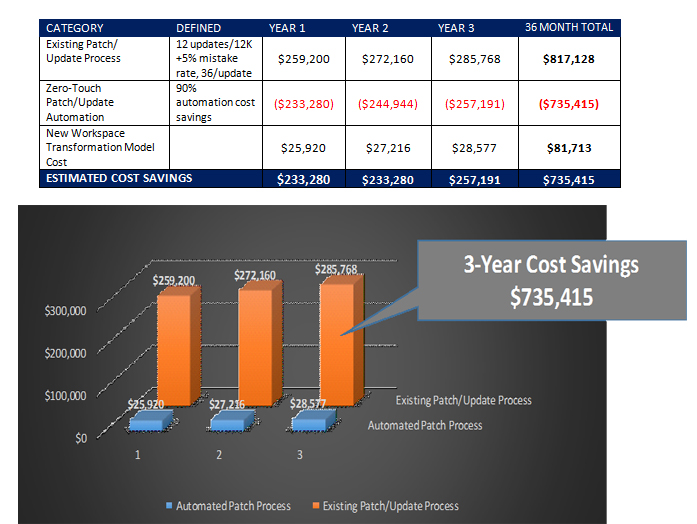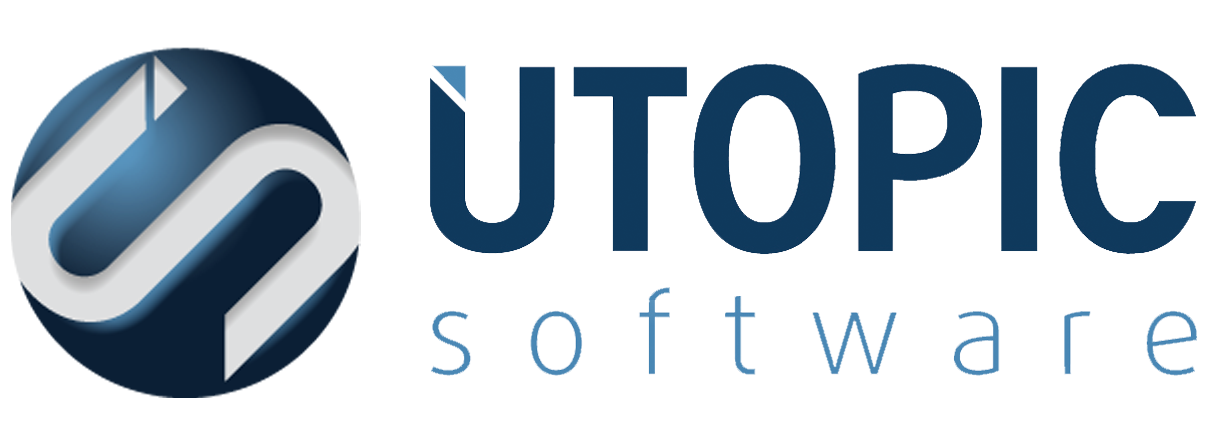Case Study – Patch Success
Case Study – Patch Success
Improving Workspace Transformation through Persystent
Suite’s Optimization and Increased Patch Success Capabilities
A ROI and TCO Case Study
Change is constant. New technologies, new hardware, new processes occur with regularity, and it falls to IT to adapt and adopt. Between new applications, expiring warranties and shifting business priorities, the compute environment completely turns over in roughly 3 to 4 year cycles. But, these modifications are not a one-time sea change. It’s a steady progression that typically replaces one-third of the computer population annually. Ultimately, the change process is continuous. Sometimes the changes are small tweaks or patches that need distribution on a semi-regular basis. Persystent Suite is the automating agent which streamlines updates helps companies overcome cost, speed and complexity challenges associated with change.
To be clear, what we are addressing in this section is the need to continuously update. It’s transformation over time; keeping in line with compliance; ensuring the security is up to date, using the latest versions of applications and adjusting processes to maintain evolving business needs–all towards the goal of ensuring each machine under management is running at optimum capacities and homogeneous with unique strategic practices (especially when dealing with a hybrid of legacy, SaaS and other cloud-related components).
And as important to the continuous optimization, or more likely, goes hand in hand with that objective, is the ability to maintain or increase the productivity of the end users. However, when we address our TCO calculations, this benefit isn’t included because of the differing definition of what increased productivity means to each individual company and how it translates into, not just savings, but realized revenue. This, by no means, doesn’t discount the importance of productivity as part of the overall ROI…its harder to quantify. For example, lets say expected downtime based on performance issues, updates, patches and optimization and other scheduled and unscheduled technical interruptions is about 1% of the person’s year…we’re talking about 24 minutes a month. For someone making 60,000, that is $600 in lost time a year…but the harder to quantify portion of the equation not what was lost, but how much revenue was gained as a result of eliminating the 1.5%, or as a result of optimizing their tools and getting users up and running faster. It is certainly more than the $600 per person.
Automations are the central piece to drive TCO and ensure an expected result. Consider “Patch Tuesday” or any other small incremental change requiring a modification to each and every image under management. Using SCCM or other manual controls, IT must apply the change to every computer in succession. For example, if there are 1000 PCs needing the change, manual controls require you apply the change 1000 times…1,000 chances for an error or conflict. OR, by using automation, you can apply the change to a golden image, test it ensure it works without issue or conflict, and then set a schedule for it to be released. Just once. Automations enforce the desired state before patch or update process begins. This process reduces remote support requirements enabling the system to rollback should a failure occur So, the next time a user reboots their machine, the new updated image will apply pre-boot (after BIOS, before the OS). If for whatever reason, the update fails, automations make it much easier to roll back to the last known approved state and reapply the changes from that point.
This automated methodology ensures patches and updates are applied consistently and successfully. Persystent’s Integration with traditional SCCM, WSUS, and modern UEM technologies HELPS to create AN automated, efficient, successful, intelligent and proactive provisioning process. Not to mention how IT saves on support issues by means of the efficiencies gained through automated distribution and the ability to seamlessly rollback should an error occur.
Our TCO examines the gains realized from automating the means to optimize and increasing the patch success rate by 95%. It takes into account documented Persystent user results as well as accepted deployment statistics. It assumes about 12 updates per machine per year and roughly a 5% failure-slash-redo requirement. In a 12,000 PC environment…we are talking 144,000 individual updates and 7200 of those updates will fail. Using manual means, it takes a technician about an hour to apply, test and deploy the patches. Automation using the process of a single-time update instance removes the errors 95% of the time. This significantly reduces the time any device is down and ensures the updated machine had the patch or update applied successfully. The gaffes, unexpected conflicts and redos alone cost upwards of $260,000 per year. By eliminating most of that through automated processes, you are saving more than $233,000 a year and your patch success rate skyrockets. And, as mentioned earlier, this does not include the revenue gained by supporting end users without interruption.
The following TCO figures are based on:
- Known Persystent Suite client results
- Accepted industry averages including scheduled updates per year, time per manual, semi-manual update and IT salary
- Enterprise with 12,000 managed/distributed PCs, but percentiles are still valid with both smaller and larger fleets
- Assumes a 5% error rate with regard to updates, patches

Ready to get started?
If you have any questions, suggestions or requests, please contact us.
